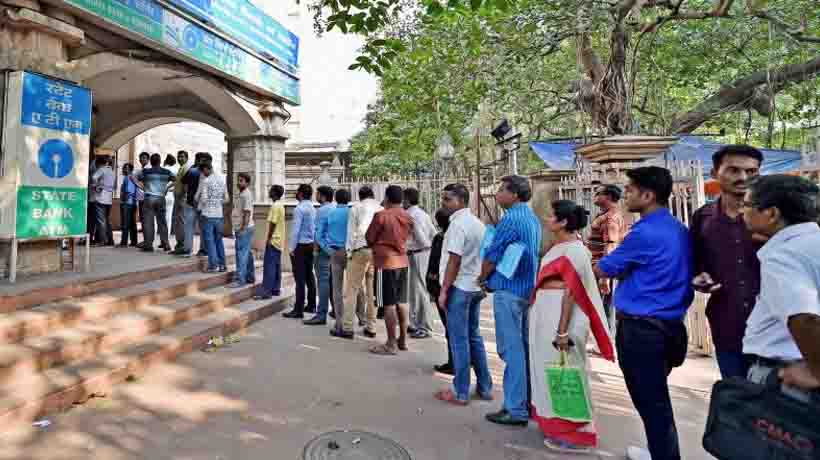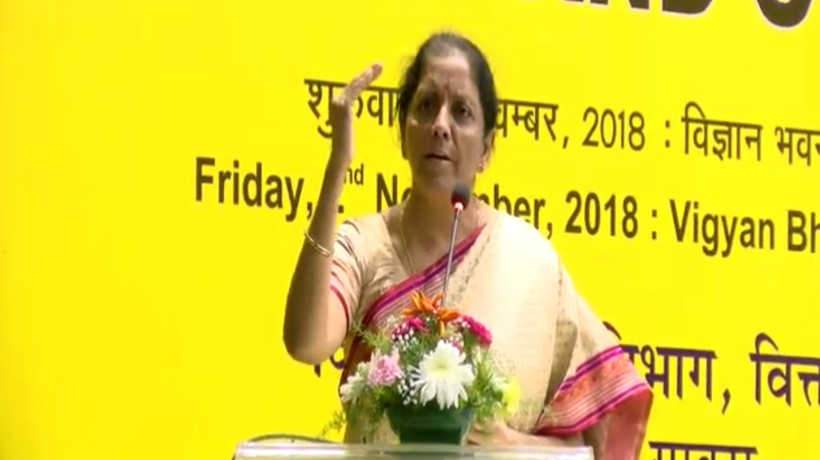Trending Now
- 830 voters names go missing in Kavundampalayam constituency
- If BJP comes to power we shall consider bringing back electoral bonds: Nirmala Sitaraman
- Monitoring at check posts between Kerala and TN intensified as bird flu gets virulent in Kerala
Whats Hot
To beat cash crunch, government to print more Rs 500 notes
![]() April 18, 2018
April 18, 2018
Image credit : Illustrative image
Large-scale hoarding of Rs 2,000 notes which were introduced in 2016 to speedily remonetise the economy in the post note ban phase has directly and indirectly led to a huge cash crunch. This has made the government and the RBI spend all of Tuesday desperately trying to rush cash to areas which are witnessing serious shortage.
While the government maintained that the cash shortage and dry ATMs were restricted to a few states, ordinary citizen all over the country partly driven by reports of deficient supply went searching for cash in vain.
Top sources in the government said that the printing of Rs 2,000 notes was stopped mid-2017.
On paper, the total worth of Rs 2,000 notes in circulation as of today is Rs 6.7 lakh crore. This is almost one third of the Rs 18.04 lakh crore total worth of notes in circulation. It is a few thousand crores more than the Rs 17.74 lakh crore on 04 November 2016 i.e four days before Prime Minister Narendra Modi announced the note ban.
Sources say the government was receiving reports that Rs 2,000 notes in large quantities weren’t returning. Following this, some months ago the government and the RBI decided to not issue fresh Rs 2,000 notes to join the circulation.
To make up for the hoarded highest denomination, it was decided that more newly introduced Rs 200 notes will be pumped in.
The government and the RBI’s plan to make Rs 500, Rs 200 and Rs 100 the key denominations ran into a stumbling block. Not all ATM machines were calibrated to dispense the new Rs 200 notes. Nearly 30 per cent ATMs in some pockets were yet to be turned Rs 200-friendly. These are the pockets where the crisis started as Rs 2,000 notes were fewer and Rs 200 notes couldn’t be dispensed.
Economic Affairs Secretary Subhas Garg on Tuesday said, “there is no shortage of cash. We have around Rs 1.75 lakh crore worth of currency in reserves.”
The Economic Affairs Secretary seems to be right as cash availability was not short, dispensing the cash was a problem.
The Spokesperson of the Bank Officers Association Ashwini Ranas categoric statement corroborates this. On Tuesday he said, “There is a problem of calibration of ATMs for Rs 200 notes plus there is large scale hoarding of Rs 2,000 notes happening. A large number of the high denomination notes arent returning back to the banks.”
As the word of cash shortage spread, people started drawing more for exigency. Secretary Economic Affairs in an impromptu press conference admitted, “The normal average demand of cash is about Rs 20,000 crore a month, but in the first 13 days of April itself there was a demand of Rs 45,000 crore.”
To remedy the demand supply mismatch, the government has decided to speed up the printing of Rs 500 notes. Each day the government prints Rs 500 crore worth of Rs 500 notes (1 crore pieces). Garg announced, “the government will print Rs 2,500 crore daily (R5 crore pieces daily) to meet the demand.”
The decision to print more Rs 500 notes is based on one single fact- all the ATMs in the country are calibrated to dispense Rs 500 not Rs 200.
Interestingly, Finance Minister Arun Jaitley attributed the crisis to “sudden and unusual increase” in demand for cash. After reviewing the cash situation and the measures to replenish starved zones for the second time in a week, he tweeted, “Have reviewed the currency situation in the country. Over all there is more than adequate currency in circulation and also available with the Banks. The temporary shortage caused by ‘sudden and unusual increase’ in some areas is being tackled quickly.”
The RBI sources say that the reason behind the shortage is higher than normal withdrawal of cash in Assam, Andhra Pradesh, Telangana, Karnataka, Maharashtra, Rajasthan, Uttar Pradesh, Madhya Pradesh among others. One reason for the spurt in demand was the different festivals observed by people in almost every states like Baisakhi, Bihu and others marking the solar new year.
Demand for cash also went up in many states due to the harvest season when farm wages are paid in cash and most labourers prefer to get cash in smaller denomination.
But data on how Indians spend indicates that the crisis was brewing and the RBI and government failed to anticipate it. Players in the cash management and transportation sector say that Indians, 18 months after note ban, have raised their dependence on cash than reducing it.
An insider in the business said, “there is no shortage of cash. But it’s a fact that compared to the note ban period more people are doing transactions in cash and the volume is up by a staggering 30-35 per cent. If an average transaction was worth Rs 3400 pre note ban today the worth of each transaction was Rs 4500. Demand for cash has been rising.”
He admitted that in the poll-bound Karnataka, ATMs are getting drained of cash by customers within couple of hours of adding new cash in them.
Since the note ban, cash availability has become a political issue. Naturally, BJP’s political opponents all through Tuesday feasted on the cash crunch and Congress president tweeted about it.
TMC chief Mamata Banerjee also tweeted, “Seeing reports of ATMs running out of cash in several States. Big notes missing. Reminder of #DeMonetisation days. Is there a Financial Emergency going on in the country? #CashCrunch #CashlessATMs.”
In Delhi, Junior Minister for Finance Shiv Pratap Shukla said, “there is problem in some states but it will be resolved in 2-3 days.”
However, the demand for cash will go up further as more Indians learn about a crunch. Cash movement is a complex exercise and involves logistical complexities. That’s why it may take around seven days for the supply to beat the demand.























